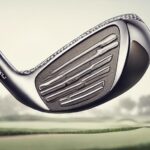- 7 Top Flite Golf Clubs XL for Improved Performance - September 28, 2024
- Top Flite Golf Clubs: Top 5 Reasons to Choose Them - September 28, 2024
- Top 3 Golf Club Fitters for a Perfect Swing - September 28, 2024
You've likely wondered what those numbers on your golf clubs mean. In general, they indicate the loft angle of the club face, affecting the height and distance the ball will travel when struck. Lower-numbered clubs have less loft, resulting in longer distances at a lower height, while higher-numbered clubs have more loft, resulting in higher trajectories but shorter distances. As you explore the different types of clubs, you'll discover how iron, wood, hybrid, and wedge clubs each have their own unique numbering systems and characteristics. Now, get ready to refine your swing and take your game to the next level.
Key Takeaways
- Golf club numbers, ranging from 1 to 9, indicate the loft angle of the club face, affecting the height and distance the golf ball will travel.
- Lower-numbered clubs have less loft, resulting in longer distances at a lower height, while higher-numbered clubs have more loft, resulting in higher trajectories but shorter distances.
- Iron club numbers, ranging from 2 to 9, correspond to specific loft angles, with lower numbers having lower lofts and longer shafts, and higher numbers having higher lofts and shorter shafts.
- Wood club numbers, ranging from 1 to 9, indicate a specific combination of loft and distance capabilities, with lower numbers meaning less loft and longer distances, and higher numbers meaning more loft and shorter distances.
- Hybrid clubs offer a range of loft and distance options, combining the forgiveness of fairway woods with the workability of irons, allowing golfers to choose the right club for their swing style and shot requirements.
Understanding Golf Club Numbers
To grasp the fundamentals of golf, it's essential that you understand what golf club numbers represent and how they impact your game.
Golf club numbers, ranging from 1 to 9, indicate the loft angle of the club face, which affects the height and distance the golf ball will travel when struck. Lower-numbered clubs have less loft, resulting in longer distances at a lower height, while higher-numbered clubs have more loft, resulting in higher trajectories but shorter distances.
As you choose a club, you need to weigh the loft angle to achieve the desired outcome. Understanding golf club numbers is vital for selecting the right club for a particular shot. You can't just pick any club; you need to know what each number represents to make an informed decision.
The numbers on a golf club are specific to each type of club, with different characteristics and designs. By recognizing the correlation between golf club numbers and loft angle, you'll be able to improve your overall golf performance and enjoyment. Mastering this fundamental concept will elevate your game and give you a competitive edge.
Loft Angle Indicators
You'll find the loft angle indicator on your golf club, typically denoted by a number, which serves as a key guide in selecting the right club for your shot. This number indicates the angle at which the clubhead will strike the ball, affecting the height and trajectory of the ball's flight. Lower numbers indicate less loft and longer distances, while higher numbers indicate more loft and shorter distances.
Understanding the loft angle indicator is essential for choosing the right club for a particular shot. Here's a breakdown of typical loft angles for different types of clubs:
| Club Type | Loft Angle Range |
|---|---|
| Drivers | 8-12 degrees |
| Fairway Woods | 15-19 degrees |
| Irons and Wedges | 20-64 degrees |
Iron Club Numbering System
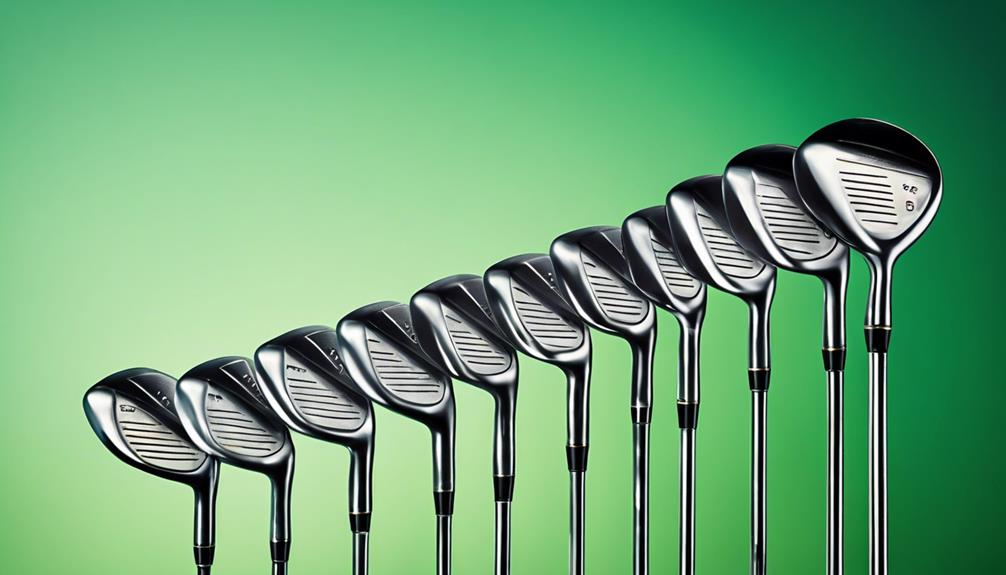
As you explore the iron club numbering system, you'll notice that each iron type has a unique purpose and corresponding loft angle.
You're likely wondering what these iron types are and how their loft angles impact your gameplay.
Let's break down the different iron types, such as 1-irons to 9-irons, and examine their corresponding loft angles to better understand how they affect your shots.
Iron Types Explained
When traversing the iron club numbering system, golfers typically encounter a range of options, from the 1-iron to the 9-iron, each with its unique characteristics and uses.
You'll notice that lower numbered irons, such as the 1-iron and 2-iron, have lower lofts and longer shafts, making them suitable for longer shots. These long irons are ideal for hitting the ball far and low, with the 1-iron being used for extremely long shots and the 2-iron for shots requiring a slightly higher trajectory.
As you move up the iron club numbering system, you'll find that the irons become more specialized.
The 3-iron, another type of long iron, is used for shots from the fairway or rough within 200 yards of the green.
The higher numbered irons, such as the 7-iron to 9-iron, have higher lofts and are used for shorter, higher-flying shots, typically within 100 yards of the green.
Understanding the unique characteristics of each iron type will help you choose the right iron club for your shot, improving your overall game.
Iron Loft Angles
Mastering the iron club numbering system requires understanding iron loft angles, which greatly impact the trajectory and distance of your shots.
As you explore the system, you'll find that iron loft angles range from around 20 to 41 degrees. The lower the iron number, the lower the loft angle, and vice versa.
For instance, the #1 iron typically has a loft angle of around 20-22 degrees, while the #9 iron has a loft angle of around 41-43 degrees.
Understanding iron loft angles is vital because they determine the height and distance of your shots. Higher-lofted irons produce higher shots with less distance, while lower-lofted irons produce lower shots with more distance.
However, you must remember that the iron club numbering system isn't strictly based on loft angle; shaft length and clubhead design also play a role.
Even tour players recognize the importance of iron loft angles, often carrying a mix of irons with different lofts to accommodate their individual swing styles and shot preferences.
Wood Club Numbering System
Wood clubs are numbered from 1 to 9, with each number indicating a specific combination of loft and distance capabilities. As fairway woods, they're designed for longer shots, typically off the tee or for second swings. The numbering system is straightforward: lower numbers mean less loft and longer distances, while higher numbers mean more loft and shorter distances.
The loft of a wood club can range from 8-degrees up to lofts in the mid-twenties. Modern woods often have the actual loft stamped on them, rather than a simple number. Some manufacturers use a combination of numbers and letters to indicate loft and other features.
The most common woods used are the 1-driver, 3-wood, 5-wood, and 7-wood. The 1-driver provides the longest and straightest shot, while the 7-wood is used for higher, shorter shots.
Hybrid Club Characteristics
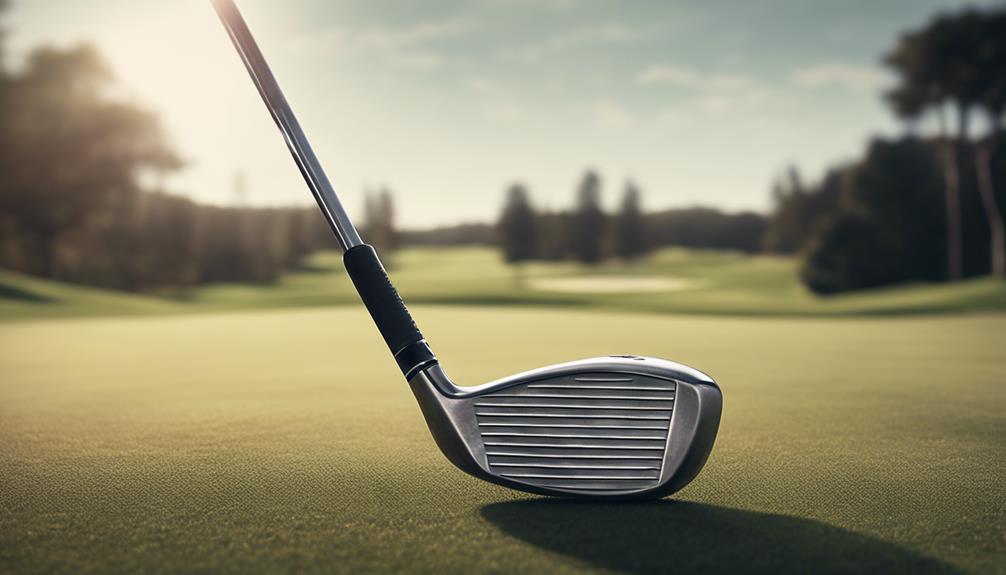
As you explore hybrid clubs, you'll notice distinct clubhead design features that set them apart from traditional irons and woods.
You'll find that hybrids offer a range of loft and distance options, allowing you to choose the right club for your swing style and shot requirements.
Clubhead Design Features
Hybrid clubs boast clubhead design features that combine the forgiveness of fairway woods with the workability of irons, making them a versatile option for golfers of all skill levels.
As you explore hybrid clubs, you'll notice that their clubhead design features are tailored to provide more forgiveness and accuracy.
The club face is larger and more forgiving than irons, but smaller than fairway woods, allowing for more control and precision.
The leading edge is designed to glide smoothly through the turf, reducing the risk of digging or chunking the ball.
Many hybrids feature an offset hosel, which helps to square the club face at impact, promoting straighter shots.
Hybrid clubs often have a lower center of gravity due to the weight being distributed more towards the sole, making it easier to launch the ball higher and farther.
The sole is typically wider and more curved than irons, allowing for smoother turf interaction and increased forgiveness on mis-hits.
Loft and Distance Options
When selecting a hybrid club, think about the loft angle, which typically ranges from 17 to 25 degrees, as it directly impacts the launch angle and spin rate of your shot.
A higher loft angle will result in a higher launch angle and more spin, while a lower loft angle will produce a lower launch angle and less spin.
This, in turn, affects the distance you'll achieve with your shot.
You'll notice that higher lofted hybrids result in shorter distances, while lower lofted hybrids result in longer distances.
As you choose a hybrid club, ponder the distance you need to cover.
If you're looking to fill the gap between your fairway woods and irons, a higher lofted hybrid might be the way to go.
However, if you're seeking more distance, a lower lofted hybrid could be the better option.
Remember, the loft angle is just one factor to bear in mind when selecting a hybrid club.
Take into account your swing speed, ball position, and overall game strategy to make certain you're getting the most out of your hybrid club.
Wedge Club Numbering System
What distinguishes the wedge club numbering system from others is its unique labeling convention, which primarily focuses on the loft angle rather than the club's intended use. As you navigate the world of wedges, you'll notice that each club is assigned a number, usually ranging from 46 to 60, which corresponds to its loft angle. This system allows you to make more informed decisions about which wedge to use in a given situation.
The primary focus of the numbering system is the loft angle, with higher numbers indicating higher loft angles.
The system includes different types of wedges, such as pitching wedges (PW), gap wedges (GW), sand wedges (SW), and lob wedges (LW).
The numbering system helps you control distance by understanding the relationship between loft angle and distance.
The system takes into account the spin and trajectory of each wedge, allowing you to make more precise shots.
The wedge club numbering system allows for customization, as manufacturers offer a range of options to suit individual golfer's needs.
Putter Club Features
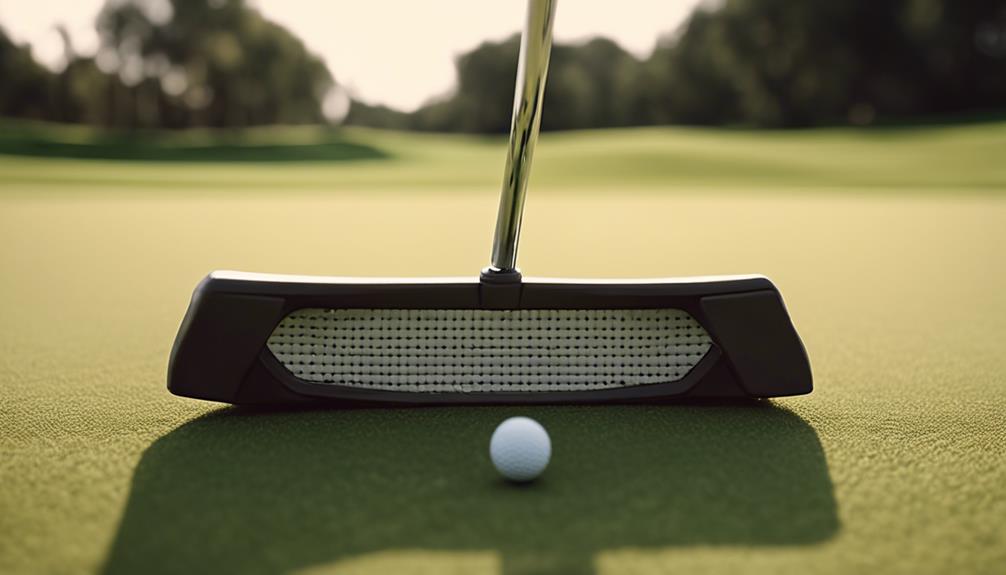
Your putter club features a unique set of characteristics that distinguish it from other clubs in your bag, with its face, lie, and loft designed to work in harmony to help you sink putts consistently.
The face of your putter is typically flat and smooth, allowing for a consistent roll on the green.
The lie, or angle, of your putter is generally more upright than other clubs, which helps you maintain a consistent plane during your putting stroke.
The loft of your putter is usually around 2-4 degrees, which is much lower than other clubs, allowing for a smooth, low-bouncing roll on the green.
When you line up your putt, consider the pitch of the green and how it will affect the ball's movement.
A good putter will help you navigate these subtleties and sink more putts.
Distance and Loft Factors
As you navigate your way through the golf bag, you'll notice that each club is carefully designed to produce a specific distance and trajectory, with the club's loft angle playing a critical role in determining how far the ball will travel.
Understanding the relationship between distance and loft angle is essential for mastering your game.
The lower the golf club number, the lower the loft angle and the longer the distance the ball will travel. The higher the golf club number, the higher the loft angle and the shorter the distance the ball will travel.
Each iron number corresponds to a specific loft angle and distance, with a 7-iron typically having a loft of around 35 degrees and a distance of around 150-160 yards.
The distance a golf ball travels is also affected by the golfer's swing speed, with faster swing speeds resulting in longer distances, and slower swing speeds resulting in shorter distances.
The loft angle and distance of a golf club can also be affected by the club's design and features, such as the clubhead material, shaft flexibility, and weight distribution.
Choosing the Right Club
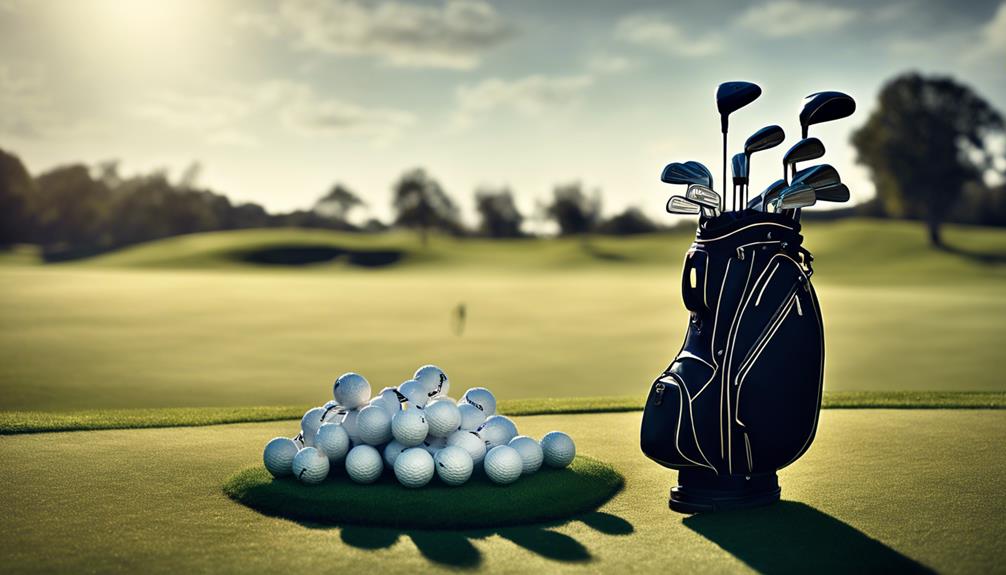
When choosing the right club, you'll need to weigh several key factors, including your golf swing analysis and personal playing style.
Your club selection should be based on your individual needs, taking into account the distance and loft you require for a particular shot.
Club Selection Factors
Selecting the right club for a shot depends on a combination of factors, including the distance to the target, the trajectory and spin you need to achieve, and the lie of the ball.
When choosing a club, you'll need to weigh the following club selection factors:
Distance: How far do you need to hit the ball? Different clubs are designed to hit the ball specific distances, so you'll need to choose a club that matches the distance to the target.
Trajectory: Do you need to hit the ball high or low? Clubs with more loft will hit the ball higher, while clubs with less loft will hit the ball lower.
Spin: Do you need to impart spin on the ball? Clubs with more spin will stop the ball quickly, while clubs with less spin will let the ball roll further.
Lie: What's the position of the ball? If the ball is in a difficult lie, you may need to choose a club that can handle that specific lie.
Wind and slope: Are there any external factors that will affect the ball's flight? You'll need to take these into account when choosing a club.
Golf Swing Analysis
To optimize your golf swing, you must pair it with the right club, which is where understanding golf club numbers comes into play.
When analyzing your golf swing, bear in mind the angle created by the clubhead's loft and your swing's trajectory. This determines the height and distance the ball will travel when struck.
For instance, if you have a steeper swing angle, you'll need a club with more loft to compensate, resulting in a higher trajectory but shorter distance.
Conversely, if you have a shallower swing angle, a club with less loft will allow for a longer distance at a lower height.
Mastering the relationship between your golf swing and the club's loft angle is vital in choosing the right club for the shot. By examining your swing style and the club's characteristics, you can select the ideal club to achieve the desired outcome.
Whether you're driving off the tee or approaching the green, pairing your golf swing with the right club will dramatically improve your game.
Famous Golfers' Favorite Clubs
As you venture into the world of professional golf, it becomes apparent that certain clubs hold a special significance for famous golfers, often becoming an integral part of their success. These clubs become an extension of the golfer, allowing them to perform at their best.
Some notable examples of famous golfers' favorite clubs include:
- Tiger Woods' putter, used in 14 of his 15 major victories, showcasing the importance of a trusted club in his success.
- Arnold Palmer's driver, instrumental in his four Masters wins, demonstrating the significance of a reliable driver in achieving victory.
- Bubba Watson's 3-iron, notable for its use in his 366-yard drive in 2018, highlighting the importance of a versatile iron in a golfer's arsenal.
- Henrik Stenson's trusty Callaway 3-wood, carried for over a decade, illustrating the bond between a golfer and their favorite club.
- Ben Hogan's 1-iron, made famous by his 213-yard shot at Merion Golf Club, showcasing the impact of a well-chosen club on a golfer's career.
These examples demonstrate the significance of clubs in a golfer's success, and how they can become an integral part of their game.
Golf Club Numbering Exceptions
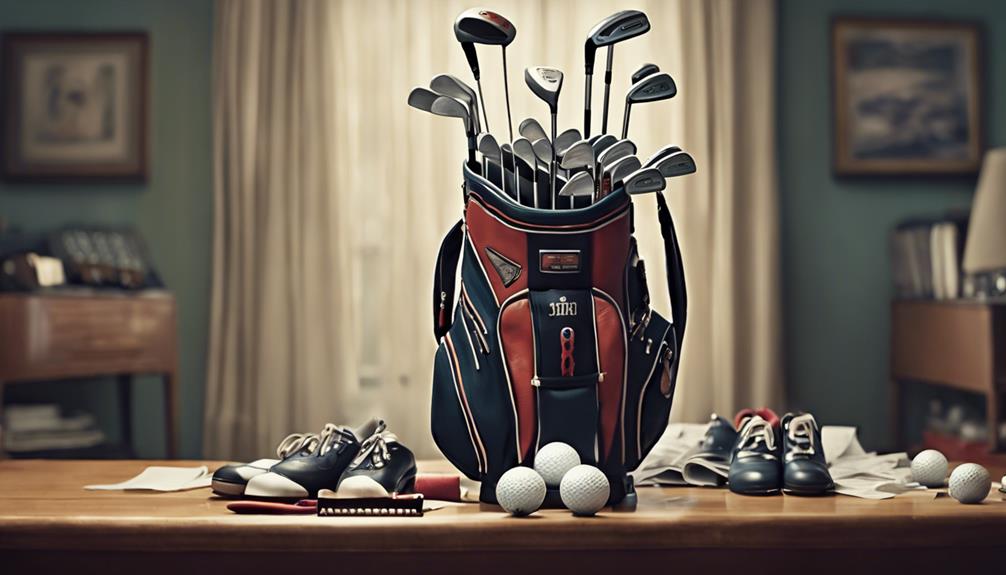
Not all golf clubs follow the traditional numbering system, with certain clubs like wedges and putters deviating from the standard numerical nomenclature.
Wedges, for instance, often have letters instead of numbers to indicate loft. You'll see P or PW for pitching wedges, S or SW for sand wedges, and L for lob wedges.
The higher the number on a wedge, the higher the loft and the shorter the distance the ball will travel. For example, a 60-degree wedge is typically used for high, short shots.
Additionally, the bounce angle on wedges is now commonly stamped next to the loft, indicating the angle created by the leading edge when the wedge is placed on the ground.
Gap wedges are also available, bridging the gap between the PW and SW with lofts ranging from 46 to 52 degrees.
On the other hand, putters don't have numbers on the sole that need to be considered, as they've a flat face and a small amount of loft, around 3 degrees, which is rarely shown.
Putting It All Into Practice
By grasping the nuances of golf club numbers, you can develop a more strategic approach to your game, leveraging this knowledge to select the right club for each shot and optimize your performance.
To put golf club numbers into practice, remember:
Understand the loft and distance associated with each club number, as lower numbers result in longer distances and higher trajectories.
Practice with different clubs to develop a sense of how each one performs and feels, and experiment with adjusting your swing to optimize your shots.
Consider your individual skill level and playing style when selecting clubs, as certain clubs may be more suitable for beginners or experienced golfers.
Pay attention to the numbers on your clubs, as they can provide valuable information about the club's intended use and distance, and use this knowledge to inform your club selection.
Frequently Asked Questions
What Do the Numbers Mean on Golf Clubs?
When you examine the numbers on your golf clubs, you're tapping into a rich Club History and Golf Tradition. These numbers, ranging from 1 to 9, indicate the loft angle, affecting the ball's trajectory and distance, with lower numbers yielding longer shots and higher numbers producing higher arcs.
How Do You Read Golf Club Numbers?
As you explore golf's rich history, you'll discover that reading golf club numbers is an art that requires understanding loft angles and customization options, allowing you to tailor your game to perfection.
What Do the Numbers on a Golf Wedge Mean?
When you examine the numbers on a golf wedge, you're looking at the Wedge Loft, which affects spin rate, and the bounce angle, which influences how the club interacts with the turf, allowing you to fine-tune your shots.
What Is a Number 7 Golf Club?
Imagine a precision-guided missile soaring through the air – that's your trusty Number 7 golf club, capable of delivering a 150-170 yard shot with ease, depending on your swing style and mastery of club distance control.
Conclusion
Now that you've mastered the art of deciphering golf club numbers, you're ready to tackle the course like a pro.
With this newfound knowledge, you'll be slicing through the air like a hot knife through butter, leaving your opponents in the dust.
Remember, choosing the right club is key, so don't be afraid to experiment and find your perfect match.
With practice and patience, you'll be well on your way to becoming a golfing mastermind, dominating the links in no time.



